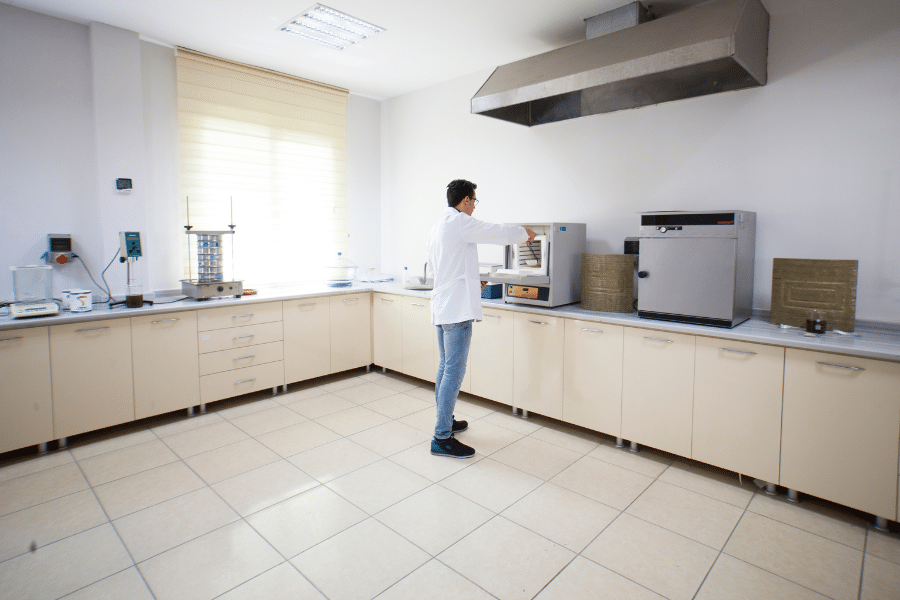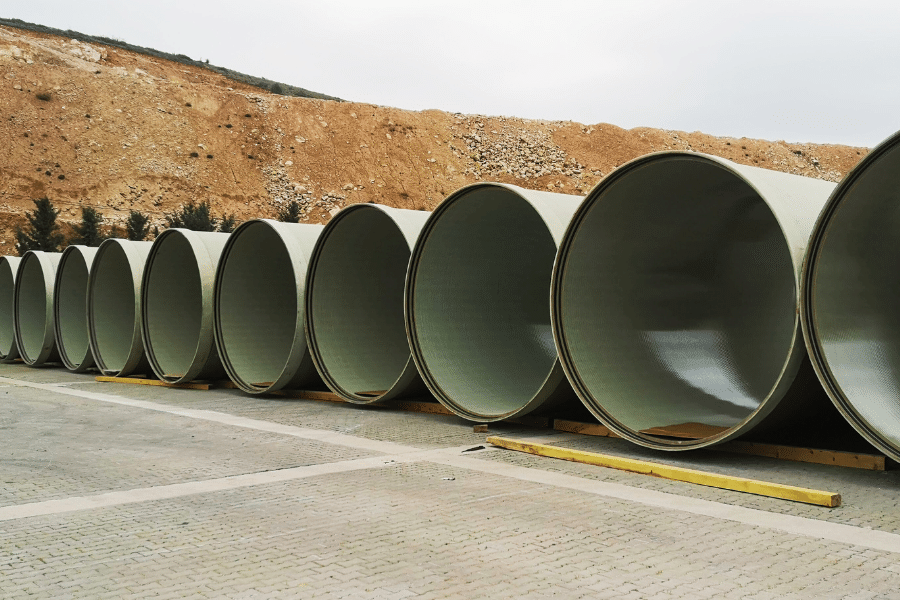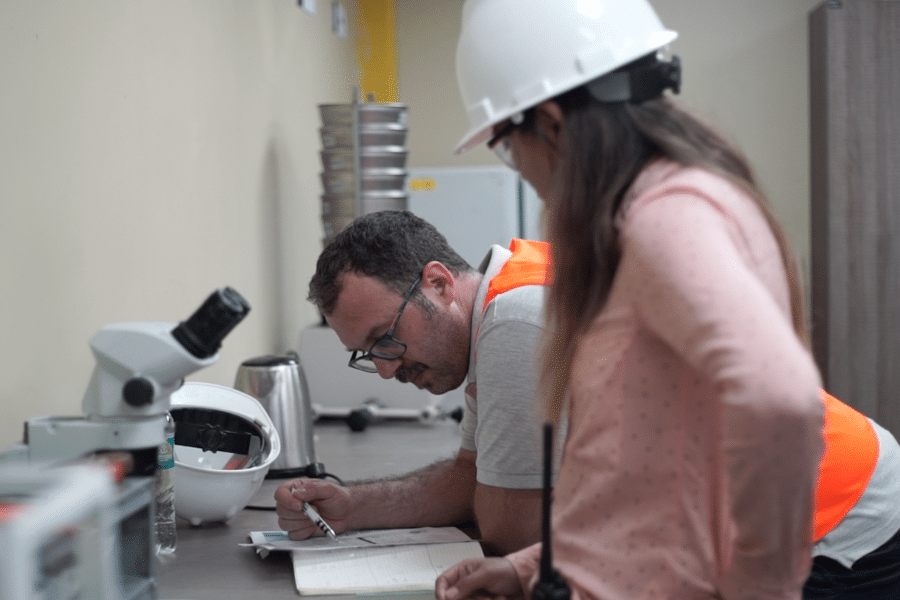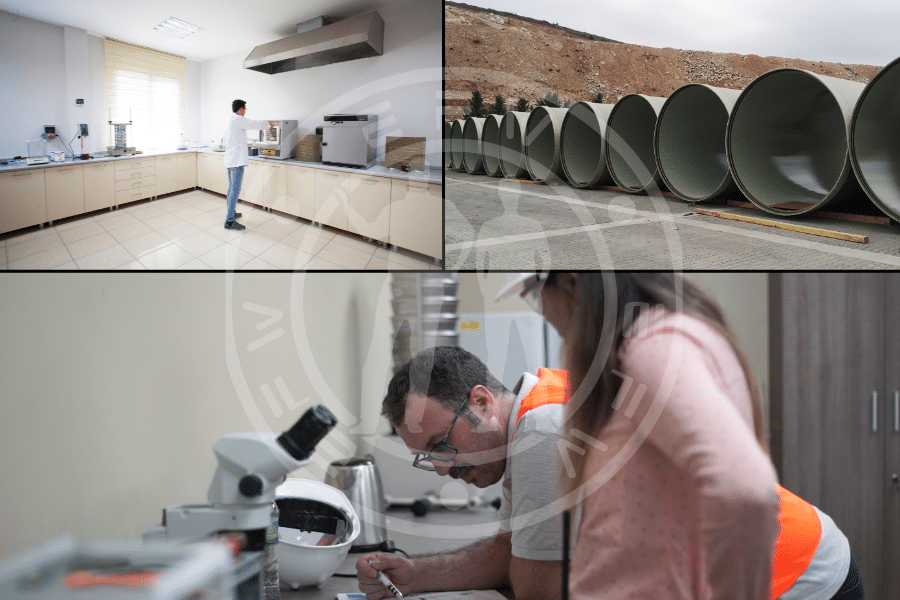When it comes to Glass Reinforced Plastic (GRP) pipe manufacturing, producing a high-quality pipe is just the beginning. The real challenge lies in striking the perfect balance between effectiveness and efficiency to maximize profits and maintain a competitive edge. This delicate equilibrium ensures not only that the final product meets rigorous standards but also that the production process itself is optimized to minimize hidden wastes that can silently erode profitability.
Hidden wastes
To truly grasp the importance of efficiency in GRP pipe manufacturing, we must first delve into the concept of hidden wastes – those subtle inefficiencies that often go unnoticed but can significantly impact the bottom line.
1. Resin Waste: The Invisible Cost Driver
Imagine you’ve just completed a production run of GRP pipes. To an investor or casual observer, the pipes appear flawless – smooth, strong, and seemingly cost-efficient. However, a critical issue lies hidden within the composition: instead of the ideal overall 26% resin content, these pipes contain 29% resin.
While this difference may seem negligible at first glance, its impact on costs is substantial. Resin is significantly more expensive than other materials used in GRP pipe manufacturing, such as sand or glass fibers. Every percentage point above the optimal resin content represents the unnecessary cost that cannot be passed on to the customer, directly eating into your profit margins.
Let’s break down the numbers:
– Optimal resin content: 26%
– Actual resin content: 29%
– Excess resin in the laminate: 3%
This excess resin doesn’t contribute to the pipe’s structural integrity or performance. It’s pure waste – an invisible cost that accumulates with every meter of pipe produced. Over time, this seemingly small discrepancy can lead to substantial financial losses.
If your yearly plant output is 15.000 tons, your financial losses would be at least USD 750.000.
2. Production Speed: The Time-Cost Equation
Another form of hidden waste involves production speed. In manufacturing, time truly is money. Every minute your production line is running incurs costs in energy, labor, and equipment wear. Therefore, optimizing production speed without compromising quality is crucial for minimizing hidden costs.
Consider this scenario: You’re currently producing pipes at a standard rate. By increasing the production speed by just 10%, you can produce more pipes with the same energy consumption and personnel. This increase in output effectively reduces the cost per meter of pipe, as the overhead costs remain constant while production volume rises.
To visualize better such output, we are talking about 1.500 tons of pipe more per year, for example, equivalent to 6,3 km of ND 1600 Pn 10 St 5000.
However, increasing production speed isn’t as simple as turning up the dial. It requires careful calibration to ensure that quality isn’t sacrificed for quantity. This is where advanced technology and process control become invaluable.
3. Maintenance Coordination: The Downtime Dilemma
Maintenance is an essential aspect of any manufacturing operation, but poorly timed maintenance can lead to significant hidden waste. In GRP pipe manufacturing, two major factors come into play: changing pipe diameters and performing preventive maintenance.
Let’s examine a common scenario:
– Changing pipe diameter may take up to a full shift
– This change may occur three times per month (depending on the production schedule)
– Result: Three shifts used for diameter change that could be used for preventive maintenance.
Over a year, this amounts to:
– 36 shifts that could be used for preventive maintenance, reducing unexpected downtimes.
The impact? Considering that a potential downtime due to the lack of preventive maintenance could lead a several days stoppage, a proper coordination represents a substantial opportunity to increase the efficiency and reduce the production costs minimizing costly downtime.

The Role of EFW® Technology
EFW® technology ensures optimal use of materials and efficient production processes, tackling the core issues of waste in GRP pipe manufacturing.
1. Advanced Monitoring: Precision in Process Control
EFW® technology incorporates a network of sophisticated sensors throughout the production line. These sensors continuously monitor critical parameters such as:
– Resin temperature
– Resin viscosity
– Resin pressure and flow
– Catalyst pressure and flow
– Sand temperature
– Fiber tension
– Curing temperature monitoring
– Pipe Thickness measurement
– Pipe laminate monitoring
– Main motors torque
– Steel band temperature monitoring
This real-time data collection allows for unprecedented insight into the manufacturing process. The system can detect even minor deviations from optimal conditions, enabling immediate adjustments to maintain quality and efficiency.
2. Real-Time Adjustments: Agility in Manufacturing
With access to real-time data, EFW® technology empowers operators to make on-the-fly adjustments to maintain optimal production speed without compromising quality. This agility is crucial in a manufacturing environment where conditions can change rapidly.
For example, if environmental factors like temperature shift, the system can automatically adjust resin temperature, resin viscosity and sand temperature to optimize the production with the new parameters. This ensures that production speed remains at its peak efficiency while maintaining the structural integrity of the pipes.
3. Coordinated Maintenance: Strategic Downtime Management
EFW® technology includes advanced planning tools that help schedule maintenance activities during inevitable downtime or non-productive periods. By aligning maintenance with necessary production pauses, such as diameter changes, manufacturers can significantly reduce overall downtime.
These planning tools take into account factors such as:
– Production schedules
– Inventory levels
– Equipment wear patterns
– Historical maintenance data
By analyzing these factors, the system can suggest optimal times for maintenance activities, ensuring that they cause minimal disruption to production.

EFW® Effective Design and Material Application
GRP pipe manufacturing is as much about material science as it is about production efficiency. EFW® technology ensures effective design and material application tailored to specific pipe requirements:
1. Material distribution on the mandrel
With an optimized material distribution on the mandrel the technical performance of the final laminate increases and consequently, to get the same pipe, it is possible to reduce the pipe cost.
2. Resin temperature control
Standard system, heating the resin in the daily tank, can achieve a temperature range during the production of ca 6 degrees. With the competitive market, nowadays, it is not feasible to produce with such temperature difference and related viscosity because it directly impact on the resin distribution. EFW® technology continuously monitors and adjusts resin temperature and viscosity to ensure optimal flow, distribution and impregnation. This precision not only improves pipe quality but also reduces waste from overdosing.
3. Material Selection
Different pipe specifications require different material compositions. EFW® technology assists in selecting the raw materials not only for the production but guaranteeing the pipeline long term performance.
Moreover, sand type and grade, fiber types, resin and peroxides formulation, cobalt and styrene mix are extremely important when a manufacturer need to optimize both performance and cost-efficiency.
4. Precise Application
Automated systems guided by EFW® technology apply materials with unprecedented accuracy. This precision reduces waste and improves consistency across production runs. For instance, all dosing materials, as well as fiber tension, can be precisely controlled to maximize strength while minimizing material use.

Competing in the Market
To maintain a competitive edge in the GRP pipe market, manufacturers must focus on three key areas:
1. Optimizing Material Costs
By optimizing material use, exploiting the perfect match between them, and substituting expensive materials that don’t bring significant advantages with cost-effectiveness, it is possible to drastically reduce production costs. EFW® technology plays a crucial role in identifying these opportunities for material optimization.
2. Increasing Production Efficiency
Speeding up production lines and reducing downtime through better maintenance scheduling directly impacts the bottom line. EFW® technology’s real-time monitoring and adjustment capabilities are essential for achieving and maintaining peak efficiency.
3. Maintaining High Quality
In a competitive market, quality cannot be compromised. EFW® technology ensures that every pipe meets or exceeds industry standards, justifying its price point and building customer trust. Consistent high quality leads to repeat business and positive word-of-mouth, crucial factors in market success.
Producing GRP pipes that meet technical specifications is just the first step. To truly succeed and remain competitive in today’s market, you must focus on both effectiveness and efficiency. EFW® technology provides the tools and methodologies to achieve this balance by addressing hidden wastes, optimizing material use, speeding up production, and coordinating maintenance.
By adopting EFW® technology, you can:
– Reduce costs through precise material usage
– Improve profitability by increasing production efficiency
– Maintain a competitive edge through consistent high-quality
– Minimize downtime with strategic maintenance planning
In an industry where margins can be tight and competition fierce, these advantages can make the difference between thriving and merely surviving.
As the GRP pipe industry continues to evolve, those who embrace advanced technologies like EFW® will be best positioned to meet future challenges and capitalize on emerging opportunities. The investment in such technology not only pays dividends in immediate cost savings and efficiency gains but also prepares manufacturers for a future where precision, efficiency, and sustainability will be more critical than ever.
Are you ready to transform your GRP pipe manufacturing process with EFW® technology?
Contact us today to learn how our advanced systems and comprehensive training can help you achieve both effectiveness and efficiency.

